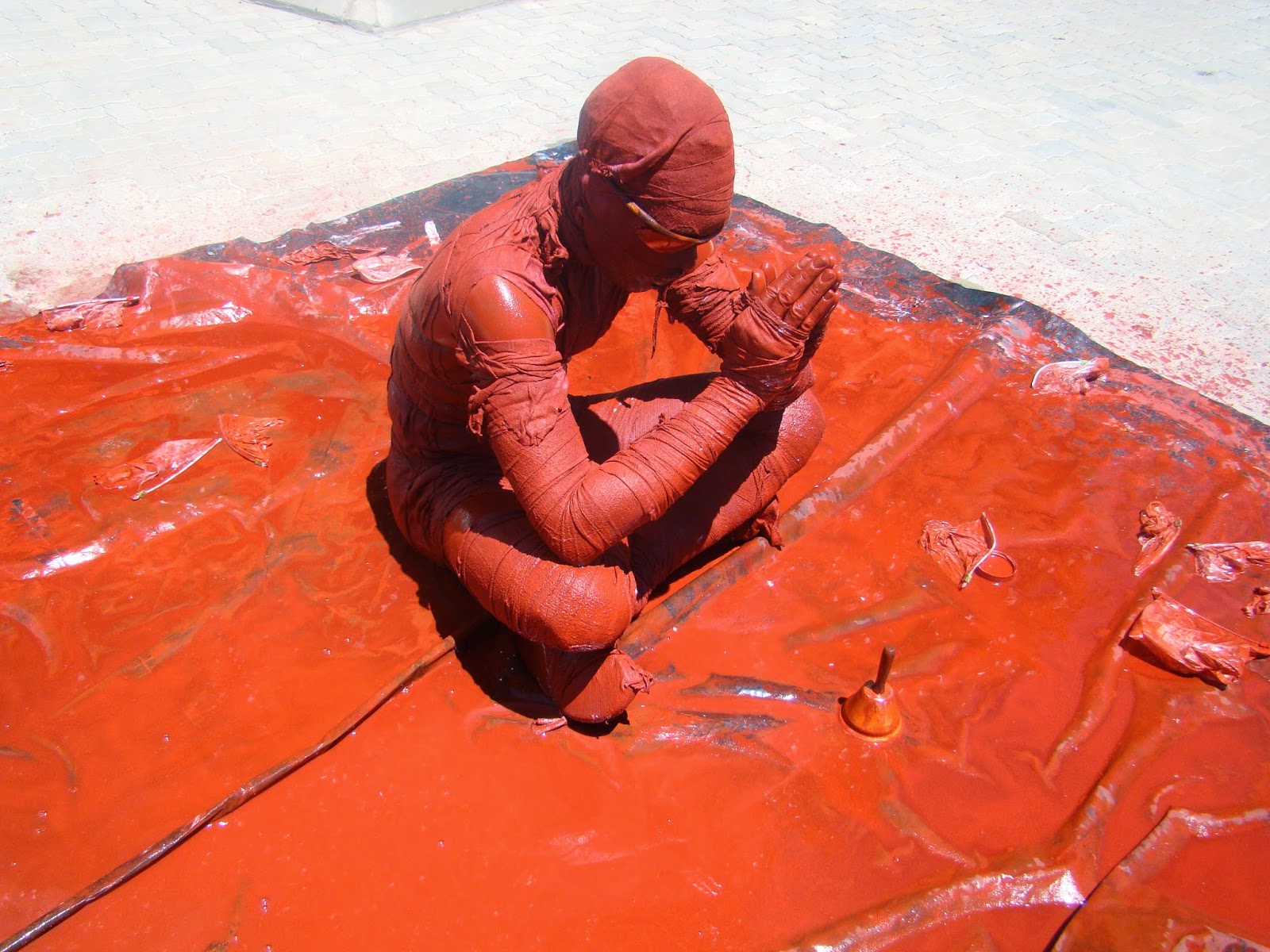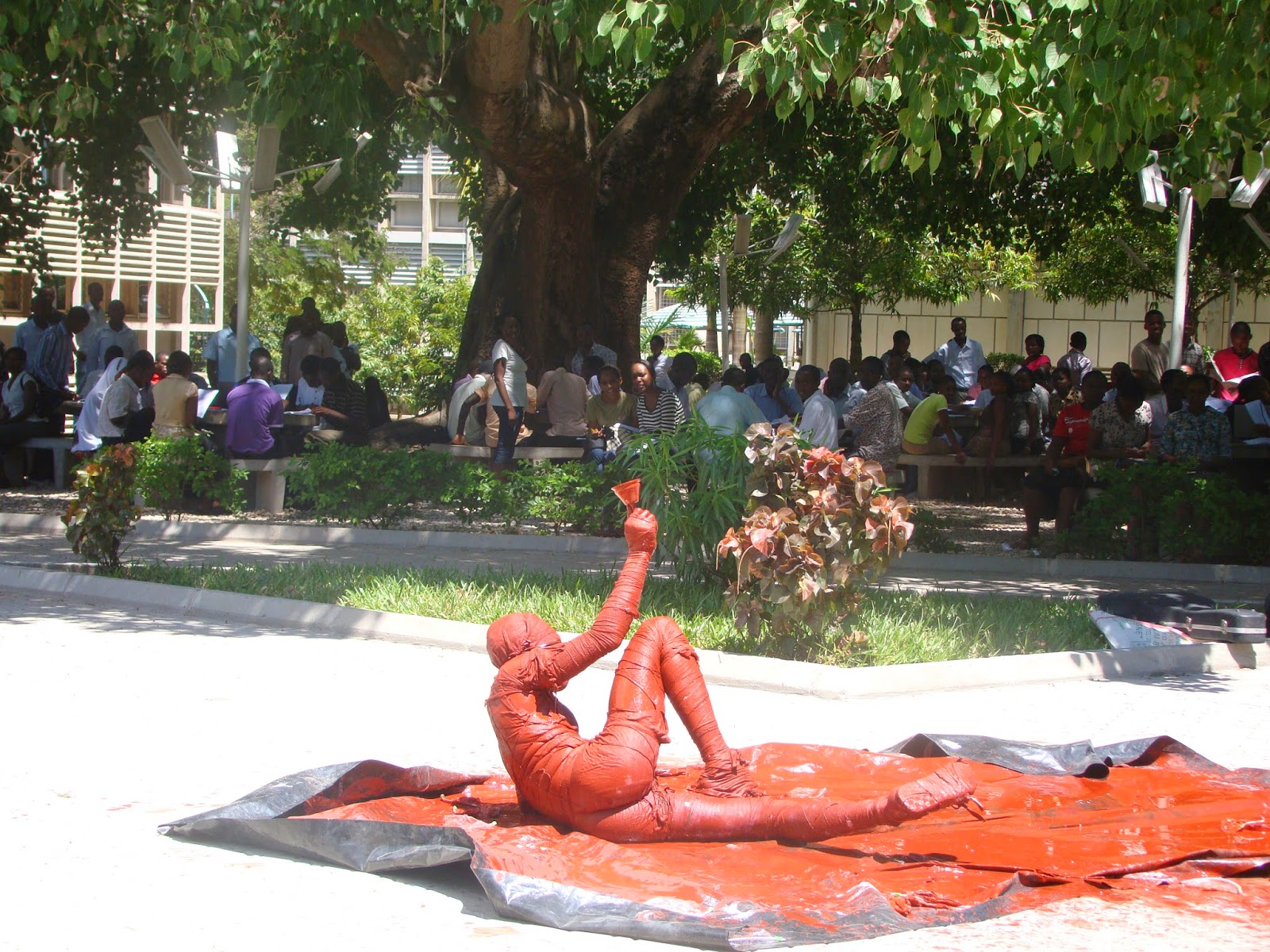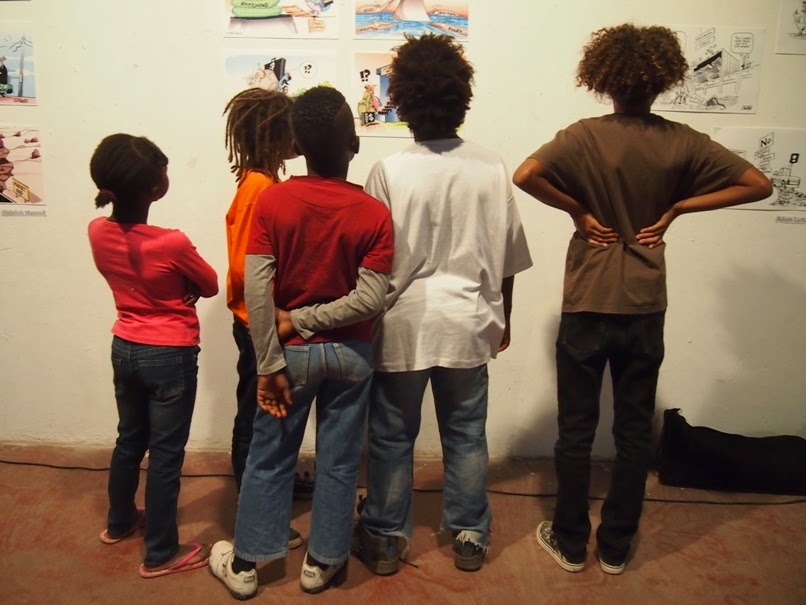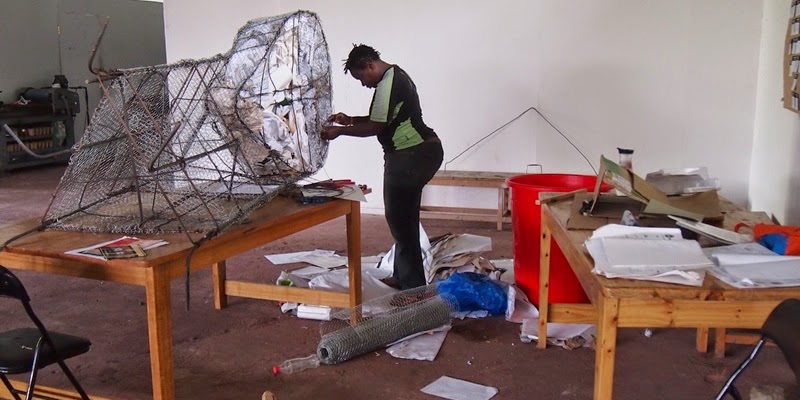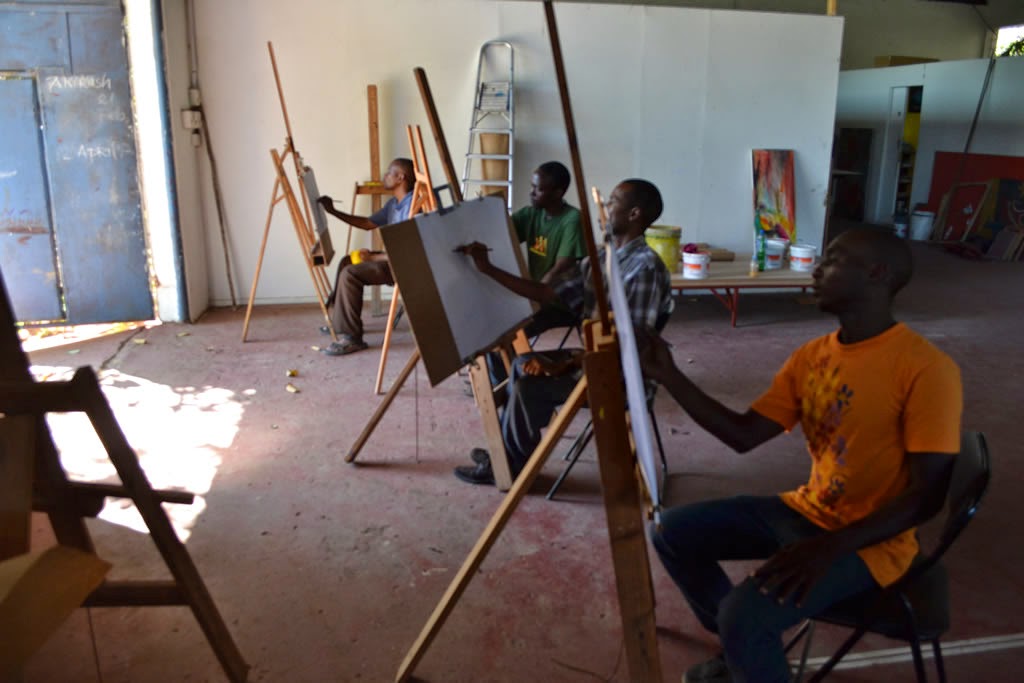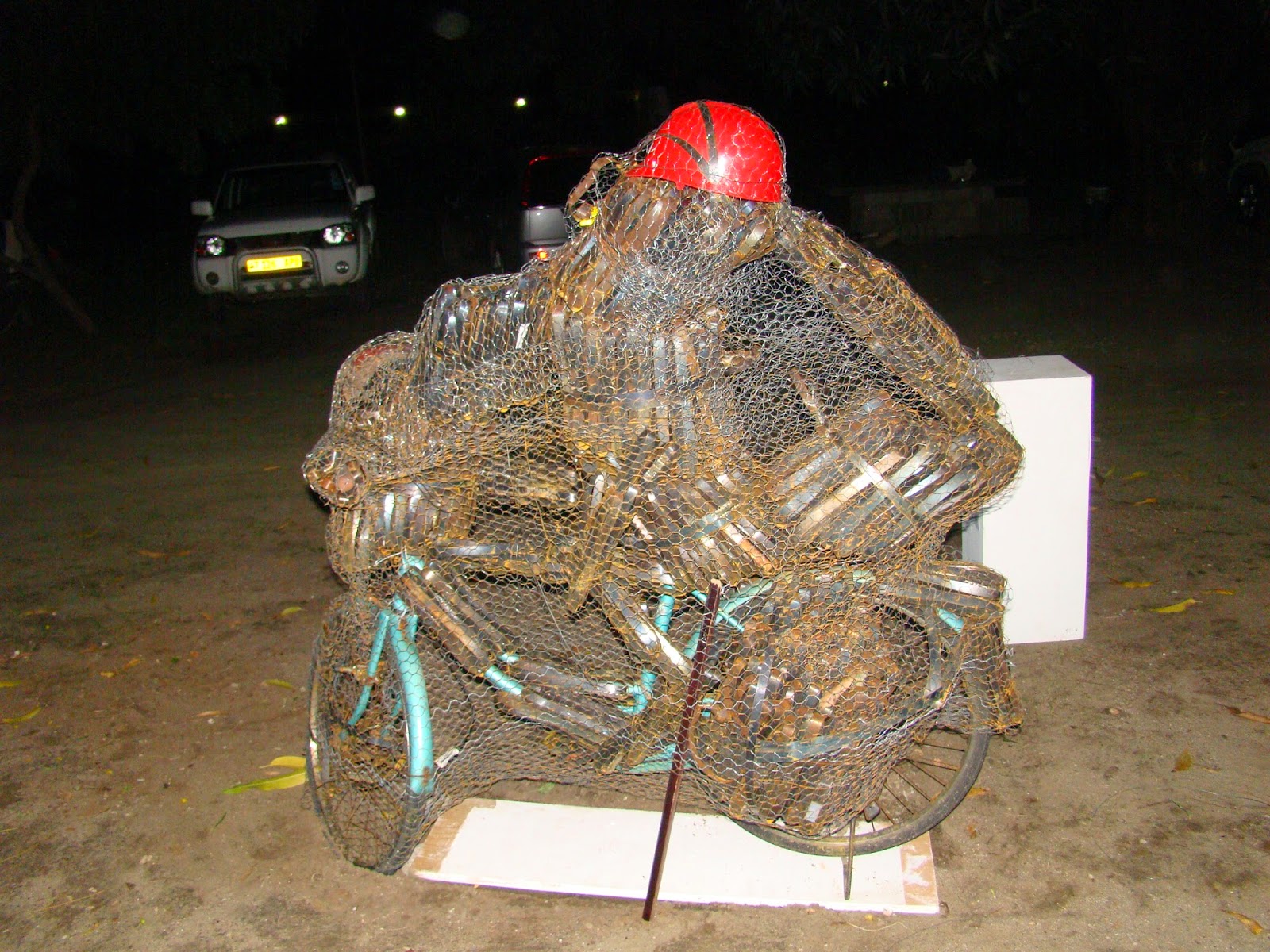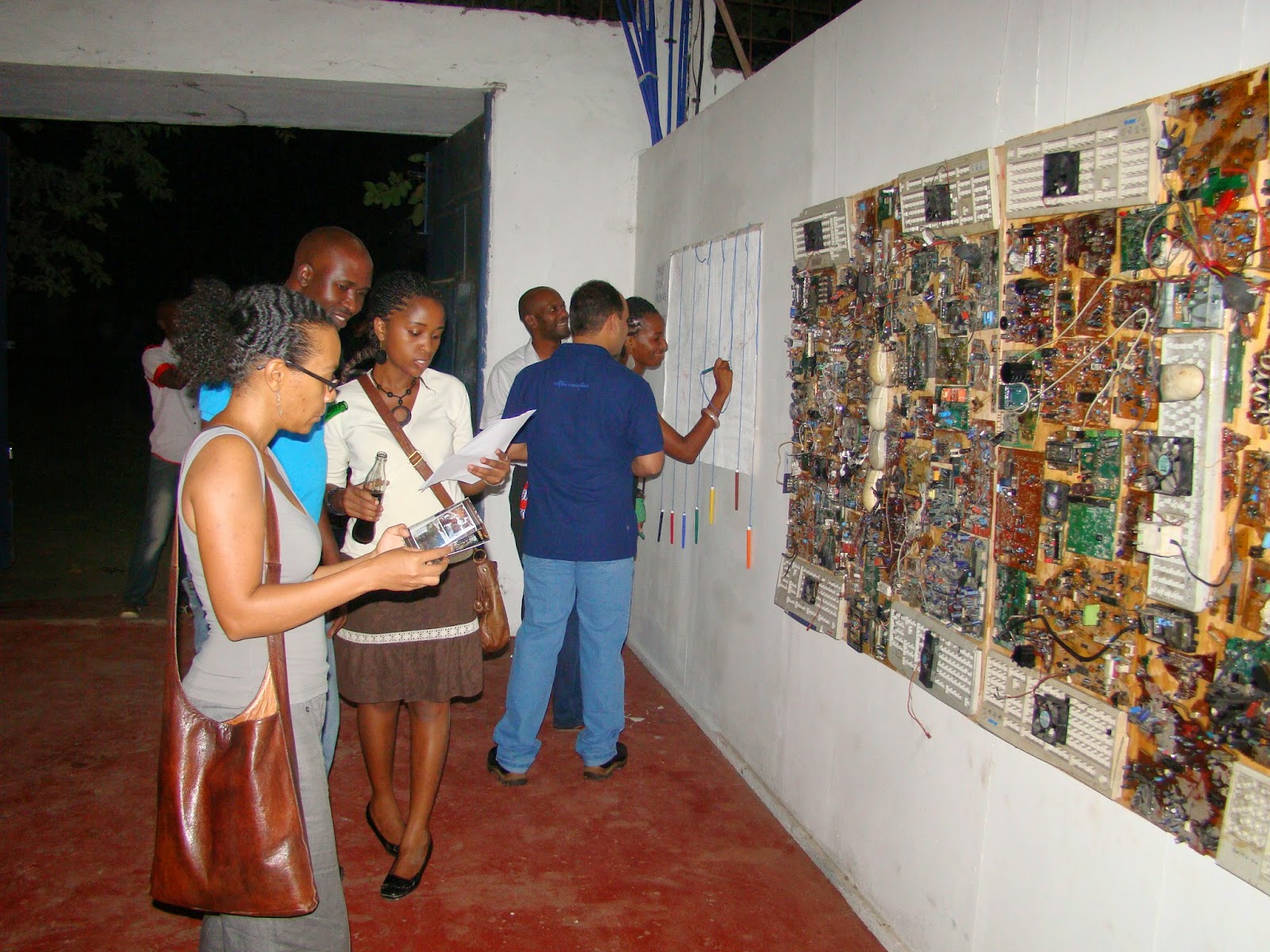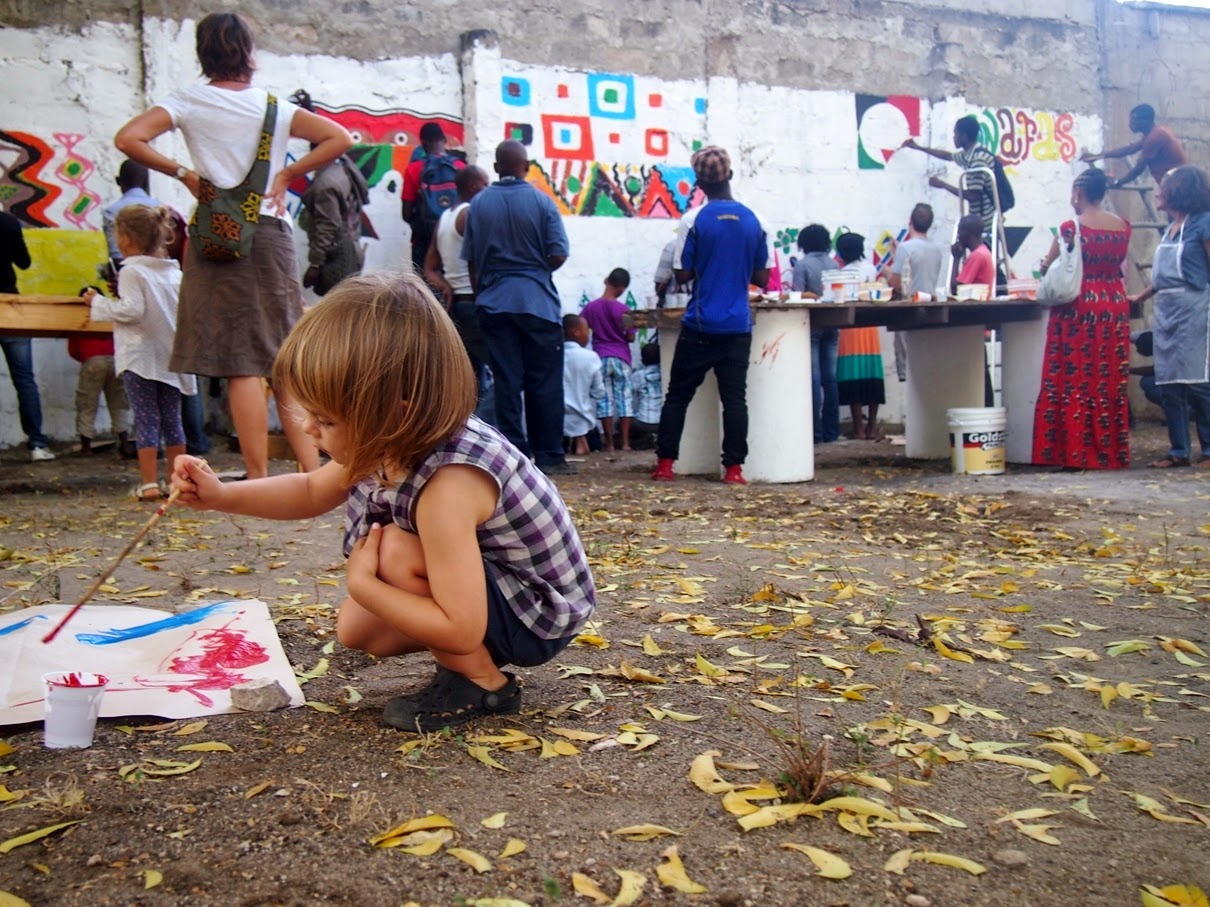How Contemporary is Tanzanian Art?
Panel Presentation by Rehema Chachage
______________
As
a practicing Tanzanian artist also functioning as the artistic manager for
Nafasi Art Space since February this year, I have had the chance to reflect a
lot about my art practice and about the Tanzanian visual art scene in general.
Today I would like to share some of my reflections and pose some questions I
have been wrestling with; hoping that they will generate a discussion on the
state of contemporary art in Tanzania.
My overarching question is: How contemporary is our art scene? And
to address this question it is in my view that we also need to pose a number of
other questions such as: To what extent
is our art evolving to catch up with contemporary reality? And who are we
producing for; what kind of ‘eye’ appreciates what we produce?
And finally
I would like us to reflect on our own
agency as artists—do we affect our context or are we simply affected by it? And
in this dance between the artist and her/his context; are we propelling
ourselves to become innovative or do we remain stifled and stagnant (due to
this context)? I think the answer to
these questions is where the future
of our art scene really lies.
How
contemporary is Tanzanian art?
Contemporary
art, by definition, is art that reflects a wide range of materials, media, and
technologies. It also reflects artists that are exploring ideas, concepts,
questions, and practices that examine the past, describe the present, and are
imaginative of the future. Such art is very diverse, and there is not
really a simple or singular way to define it, since the art itself can on the
one hand seem overwhelming and difficult, and on the other hand it seems too
simple that the viewer might wonder if they are perhaps missing something (Like
with the blank canvas with the red dot in the center, an example that Prof.Elias Jengo confusedly gave when he was presenting). And so, maybe the most
helpful definition for contemporary art is the most obvious one: contemporary art is simply the art of today.
Art21, the very resourceful documentary series for artists to challenge their own
practice and to stay in touch with other artists and art practices of today,
has one of the most interesting definitions for contemporary art. They define
it as four things… They define it as;
1. The
work of artists who are living in the twenty-first century,
2. As art
that mirrors contemporary culture and society, offering teachers, students, and
general audiences a rich resource through which to consider current ideas and
rethink the familiar.
3. Art
comprising of a dynamic combination of materials, methods, concepts, and subjects
that challenge the traditional boundaries and defies easy definition.
4. Art
that is diverse, eclectic, and one that is distinguished by its very lack of a
uniformorganizing principle or ideology.
Is
there contemporary art in Tanzania?
How
much does our art mirror any or all of the above-mentioned defining
characteristics of contemporary art? And how much are our artists giving voice
to the varied and changing cultural landscape of identity, values, and beliefs
(In this globally influenced but locally anchored, culturally diverse, and
technologically advancing world)?
Working
from Nafasi, I get to converse a lot with different artists that are members of
the center, or just visit the center on a day-to-day basis, as well as the
general public. And in these conversations, this question comes up every now
and then. Most of the feedback that I receive, and especially from
international artists coming from more exposed and more developed contemporary
art scenes, is that there is no contemporary art in Tanzania, because, in their
view, our art still concerns itself with technique and aesthetics over subject
matter and that it still mimics the traditional styles and imagery that used to
be captured by our old masters like Tinga Tinga, the Makonde carvers, etc as
well as by the old European masters… and therefore it is not evolving.
If
this is the argument, and not to say whether it is the right argument or not,
then perhaps the answer to the question is
there contemporary art in Tanzania? lies in the answer to my next question;
to what extent is our art evolving to
catch up with contemporary reality? And here I would include art schools and
curricula, art spaces and our old masters and their practices that help to
mentor our artists.
When
we look at a work of art, we tend think about things that we have seen, things
that we have heard, or things that we have experienced before. Art does not (or
should not rather) just appear—it is not created in a vacuum because artists are
constantly supposed to be researching and referencing; building on timeless
themes and researching on forgotten histories, or borrowing from traditional
methods and techniques to realize new ideas.
Looking
at Tanzanian art; in what ways can we say that our artists are diverging from
traditional notions or assumptions about Tanzanian art? And to what extent are
our art schools, curricula, art spaces, and old masters mentoring, helping or inspiring
our artists to do so?
The Tanzanian
learning system is critiqued for being a system that nurtures cramming over understanding.
If the argument is that our art still mimics the traditional styles and
imagery, and mimicking basically equates to cramming… because it is simply a
repetition of what one knows/has been taught, not less, not more. Are we then
perhaps simply an art scene of crammers? To what extent are our art schools, curricula,
art spaces, and old masters that mentor artists challenging our artists to be more
imaginative, original, and to challenge known notions of what art is and how it
can be made?
And
how challenged exactly are our artists if the art schools are not producing any
art critics or curators… and if the country has less than a handful of spaces
from which artists can exhibit their works? Is it possible for artists to
evolve without the exposure to critics, curators, collectors, art galleries and
museums?
[I
went to an art school that was, unfortunately, not local, and there we were
required, since first year, to visit an art exhibition every week and submit a
review of the exhibition at the end of the week. We were required to curate our
own student exhibitions that happened twice a year (and were marked down for
bad curating), and we were also required to reflect and write about our own
practice in relation to historical references and contemporary references. Looking
at the context in which I practice in now, and how limited it is, I wonder how
challenged an art teacher would be to even attempt to create this kind of
curricula for their students!]
It
is a known that culture, by definition, is something that is always changing and
evolving. Who are the propellers of this change of a culture? And since art is
a cultural product, but the argument is that the majority of our art (and
artists) are not evolving/changing, do we then not fall into the trap of simply
becoming an art scene of crafts people or artisans? Because crafts are often
functional, and often only concern itself with technique, and aesthetics, but not
so much with subject matter, and crafts rarely ever evolve, and they have a
very particular audience… this, by the way, leads me to my third question; who are we producing for; what kind of
‘eye’ appreciates what we produce?
Who
are our artists producing their artworks for? Is it for tourists and other
types of voyeurs from other cultures in search for the exotic (for our case its
the exotic African sunset, imagery of animals, maasais, village life, etc)? Is
it for people who are simply seeking to decorate the walls of their home and
very specific about size and colors amongst other things of the pieces they are
buying? Or is it for the hardly existing curators, collectors, art museums and
galleries in the country?
Is
making art that sells the number one driving force for our artists, and if so,
does making art that sell allow for/demand for our growth as an art scene?
Who
is our audience? What kind of ‘eye’ appreciates what we produce? Audience is
mandatory to an art practice. And if our audience taste, interest and
understanding for art does not evolve, is it really possible for our art to
evolve?
I
came across an interesting read once titled What is contemporary art and how does it matter? by Ric KasiniKadour who wrote; and I quote: ‘Art is incomplete until it is received by
the viewer. Just as artists need to evolve, society needs to evolve as
well. Before the message of the artist is relevant, the audience has to
be able to receive it… we need to learn how to read art!’ [end of quote].
The
audience plays a very active role in the process of constructing meaning in a
work of art. Some artists (including myself) often find that the viewer has a
big contribution in completing their artworks by simply contributing his or her
personal reflections, experiences, opinions, and interpretations of the artwork. To
what extent can we say that our artists are interacting and receiving useful feedback
on their practice from our Tanzanian public?
I
think that is where the challenge for the Tanzanian artist is, i.e., their agency
vs their context. Do we affect our context or are
we simply affected by it? And in this dance between the artist and her/his
context; are we propelling ourselves to become innovative or do we remain
stifled and stagnant (due to this context)?
